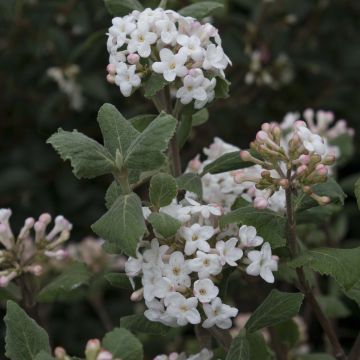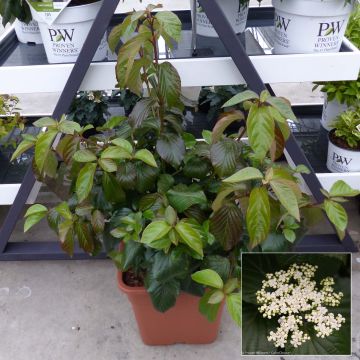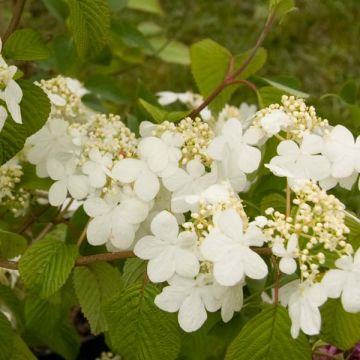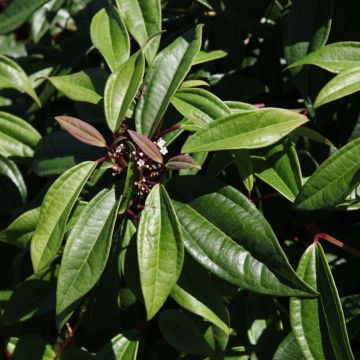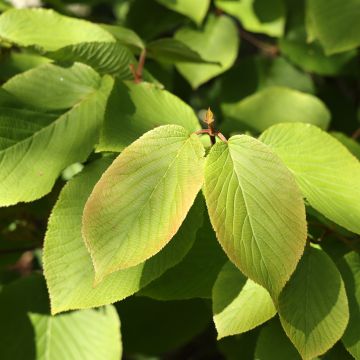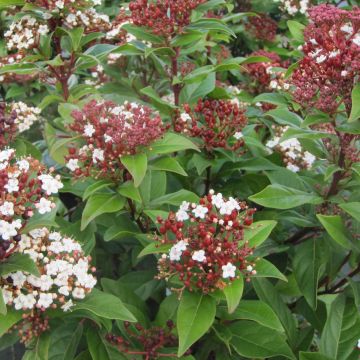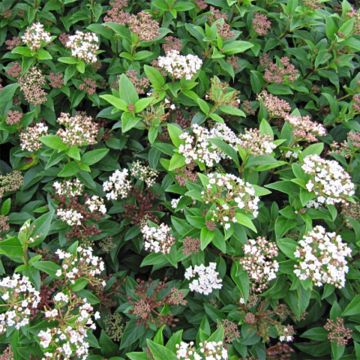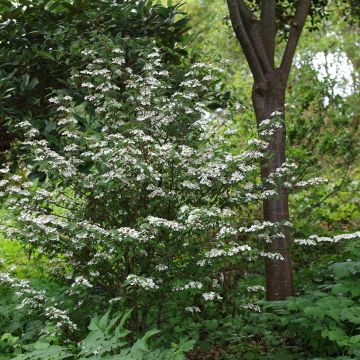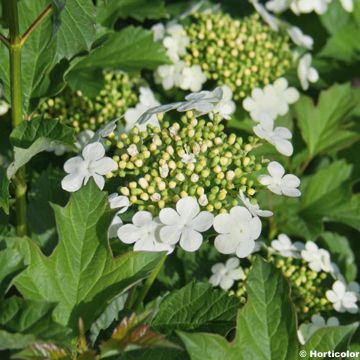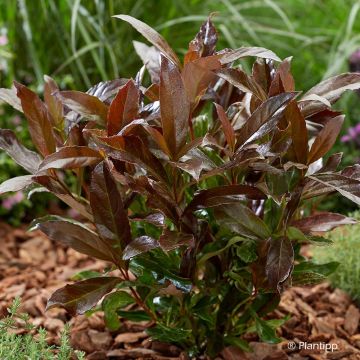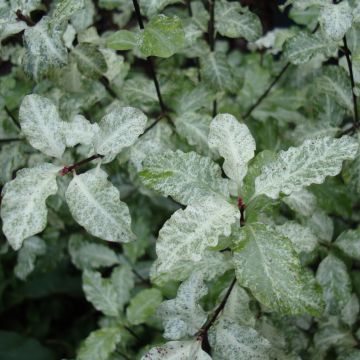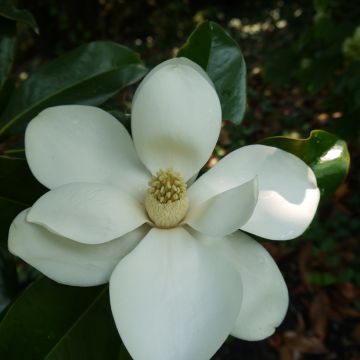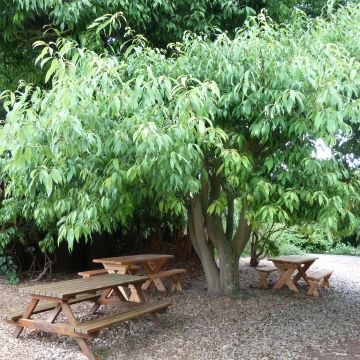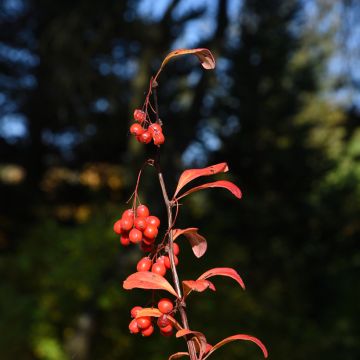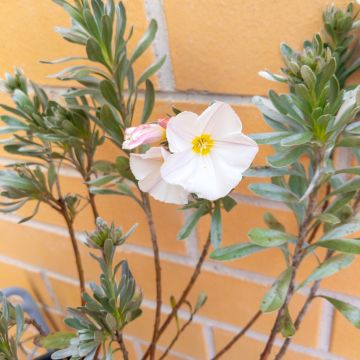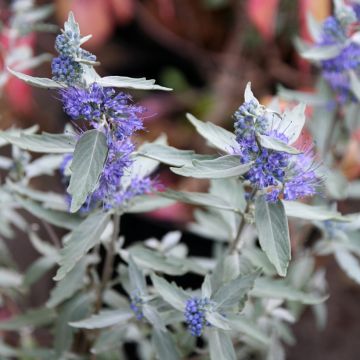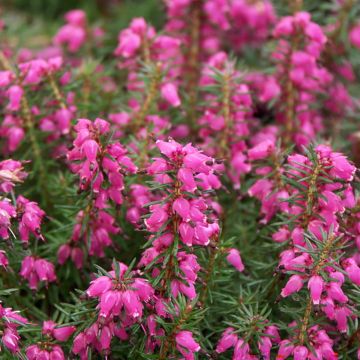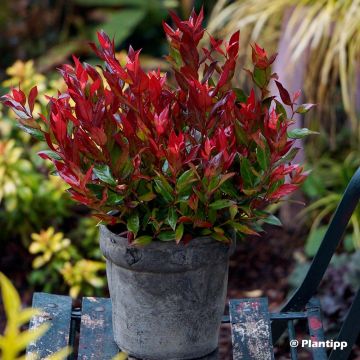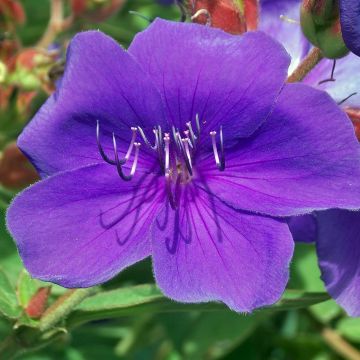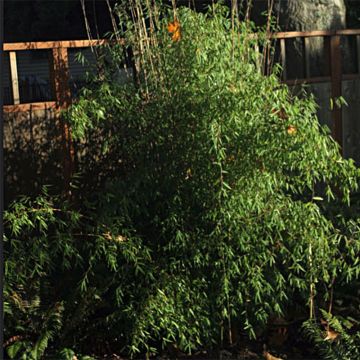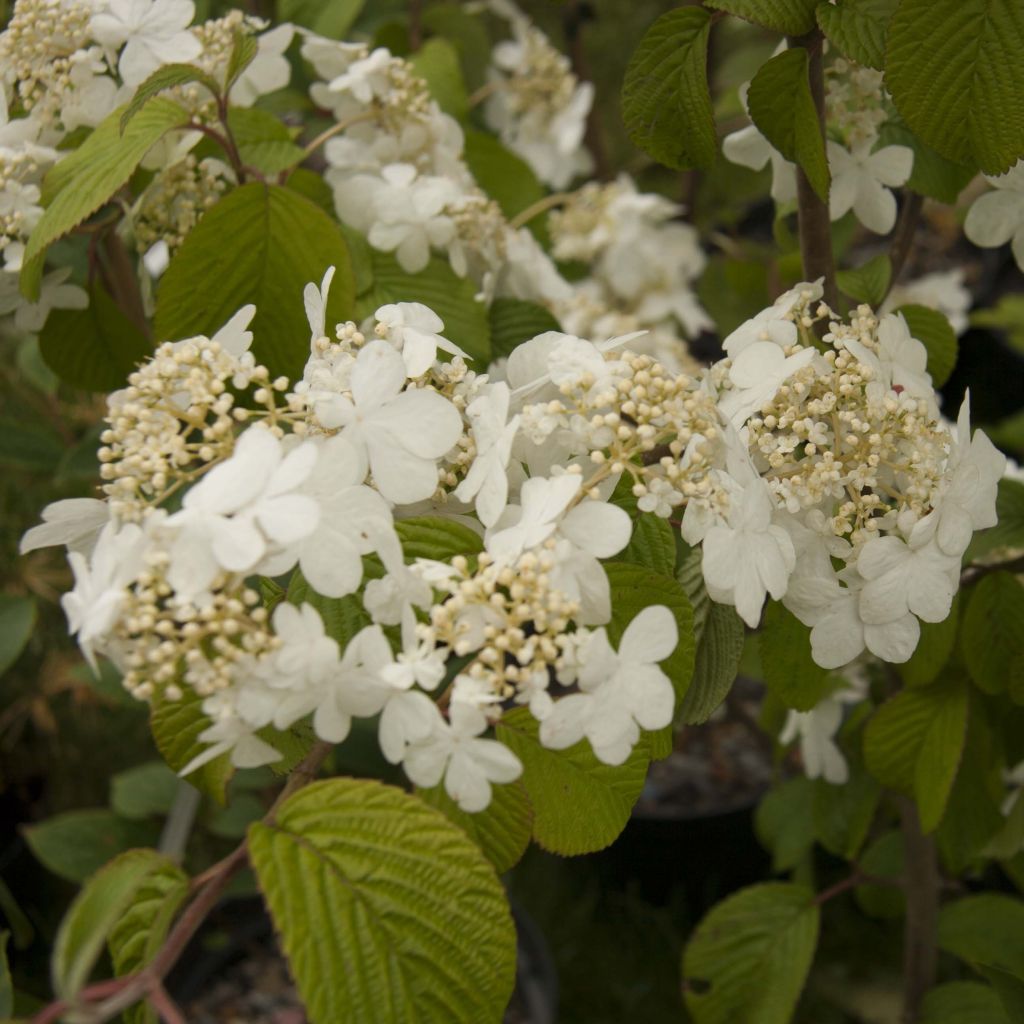

Viburnum plicatum mariesii Shasta
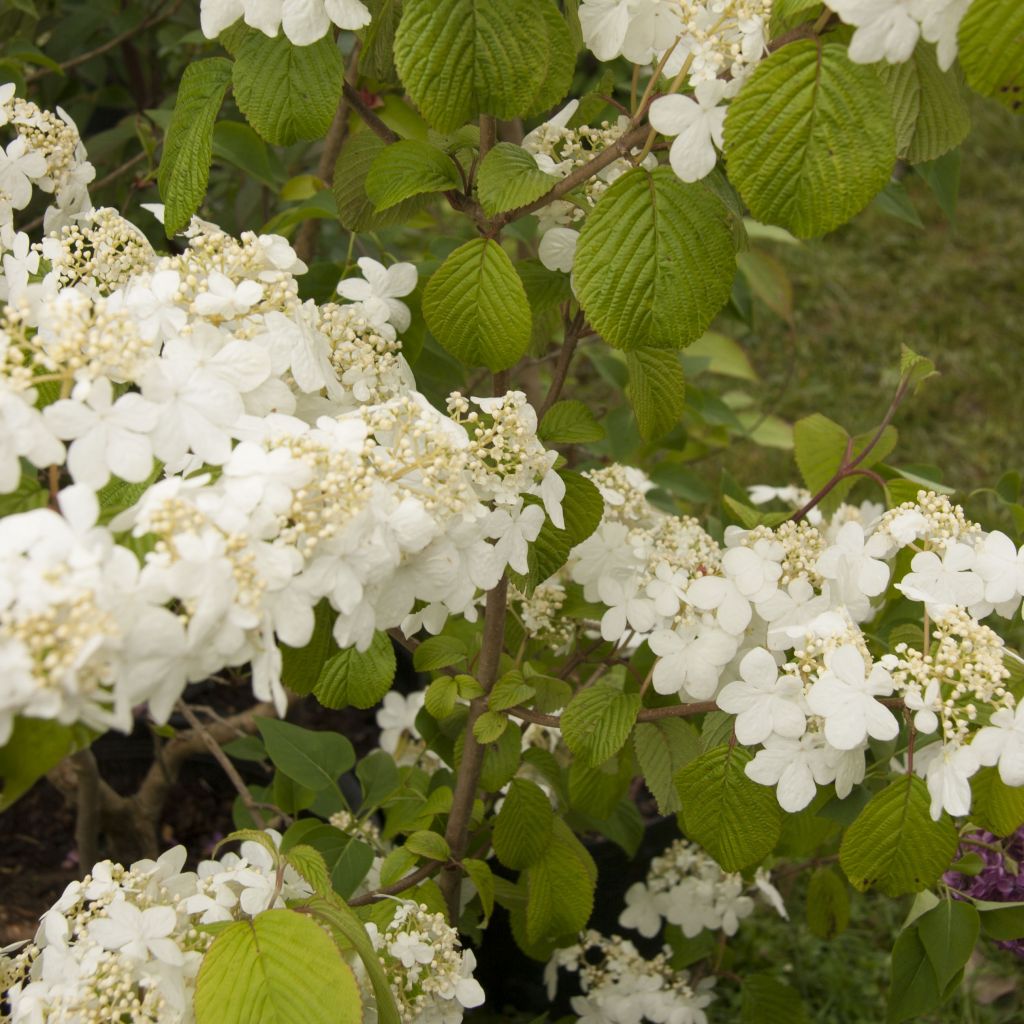

Viburnum plicatum mariesii Shasta
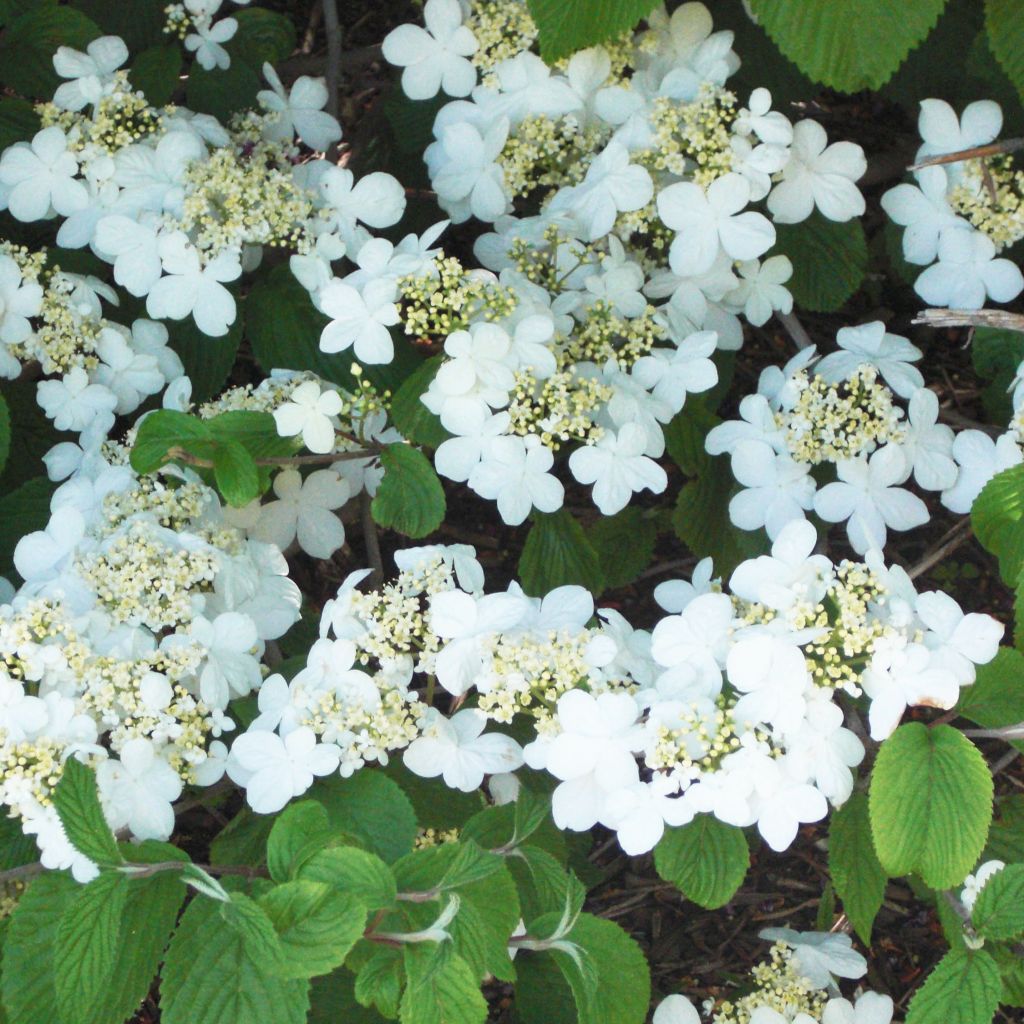

Viburnum plicatum mariesii Shasta
Viburnum plicatum mariesii Shasta
Viburnum plicatum mariesii Shasta
Japanese Snowball, Japanese Snowball Bush
Very lovely young plant. You will certainly not regret it.
Mohsen, 23/05/2021
This item cannot be shipped to the selected country
Delivery charge from €5.90
Delivery charge from €5.90
More information
Schedule delivery date,
and select date in basket
This plant carries a 24 months recovery warranty
More information
We guarantee the quality of our plants for a full growing cycle, and will replace at our expense any plant that fails to recover under normal climatic and planting conditions.
From €5.90 for pickup delivery and €6.90 for home delivery
Express home delivery from €8.90.
From €5.90 for pickup delivery and €6.90 for home delivery
Express home delivery from €8.90.

Does this plant fit my garden?
Set up your Plantfit profile →
Description
Viburnum plicatum 'Shasta' is a variety of Chinese snowball bush with a low and particularly spreading habit, much wider than it is tall, remarkably layered. It is unique during flowering: its clusters of large white flowers open in mass and in double rows along the branches, as if the shrub was weighed down with snow in the middle of June. The deciduous and glossy foliage takes on beautiful purple colours in autumn. This snowball bush, with its hydrangea-like appearance, outshines them with its early flowering and prefers sunny exposures. It will thrive in a perfectly moist and low-limestone soil.
The Chinese snowball bush is a deciduous shrub in the Adoxaceae family (formerly classified in the Caprifoliaceae family), native to China and Japan. 'Shasta' is an old horticultural creation introduced in 1979 by the American National Arboretum. This variety stands out from the type with its very pronounced and layered wide habit, and its less important development. With its horizontal branches, the plant has a structured and light silhouette that remains attractive all year round, even in winter. It will reach a height of about 1.5m (4ft 11in) with a spread of 2.5m (8ft 2in), with a rather slow growth. Flowering occurs in May and continues until June. The inflorescences, wide flat cymes of 15cm (5.9in), develop in large numbers and in two rows on the top of the branches. They are composed of a peripheral crown of large well-developed sterile flowers with elliptical white petals, surrounding small fertile flowers in the form of beige buds and then white-green. The pollinated fertile flowers turn into small red berries and then black at maturity, gathered in generous clusters. The leaves, deciduous, measure 5 to 8cm (2 to 3.1in) long, are ovate in shape, tapering, strongly veined, with regularly dentate edges. They somewhat resemble hazel leaves. Their fairly dark green colour is satin on the upper side, with the underside being more pubescent. The foliage takes on sumptuous colours in autumn, from yellow to dark burgundy red to violet.
This particularly ornamental shrub deserves a prominent place in a small garden or in the centre of a mixed border that highlights summer and autumn flowering, beautiful fruiting, and graphic foliage so as not to compete with its beauty. It can even be appreciated in winter, thanks to its regularly layered and beautifully stylized branches, with a slightly Japanese appearance. Plant this 'Shasta' Viburnum with other flowering shrubs, such as a sacred bamboo, a 'Black Lace' elderberry, a Clerodendrum trichotomum, a Fothergilla, a Berberis thunbergii 'Atropurpurea' whose purple foliage will enhance its pinkish inflorescences and red fruits. It can also be combined with compact Photinias, Elaeagnus, camellias, Pieris, or hydrangeas in non-limestone soil, the choice is vast. It also deserves to be placed in isolation in a small garden or in the centre of a bed of low perennials and grasses, thanks to its beautiful presence in winter.
Report an error about the product description
Viburnum plicatum mariesii Shasta in pictures


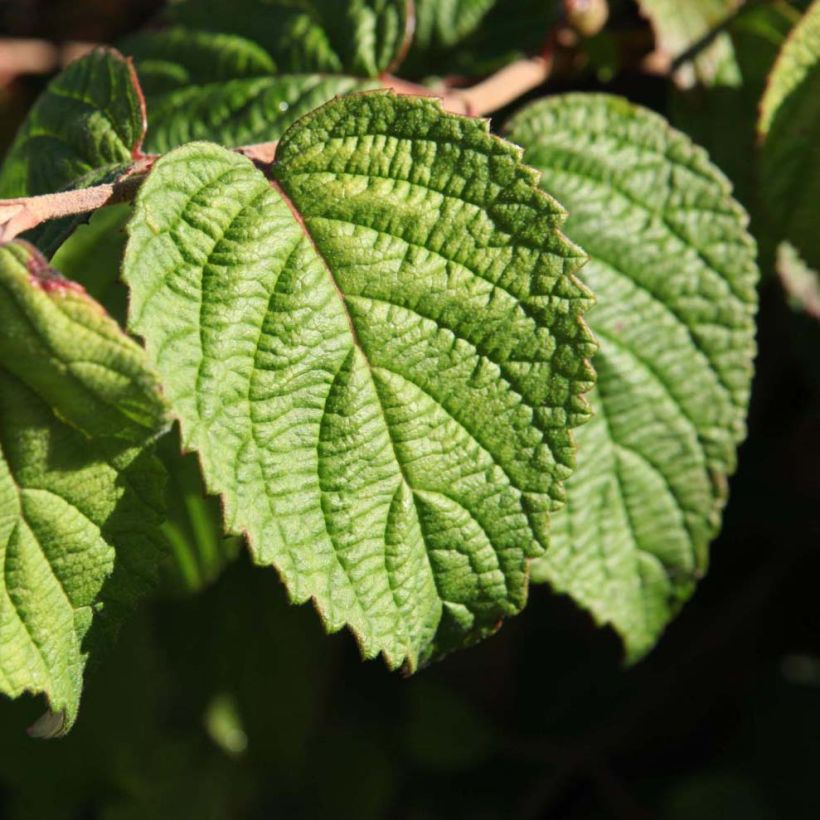

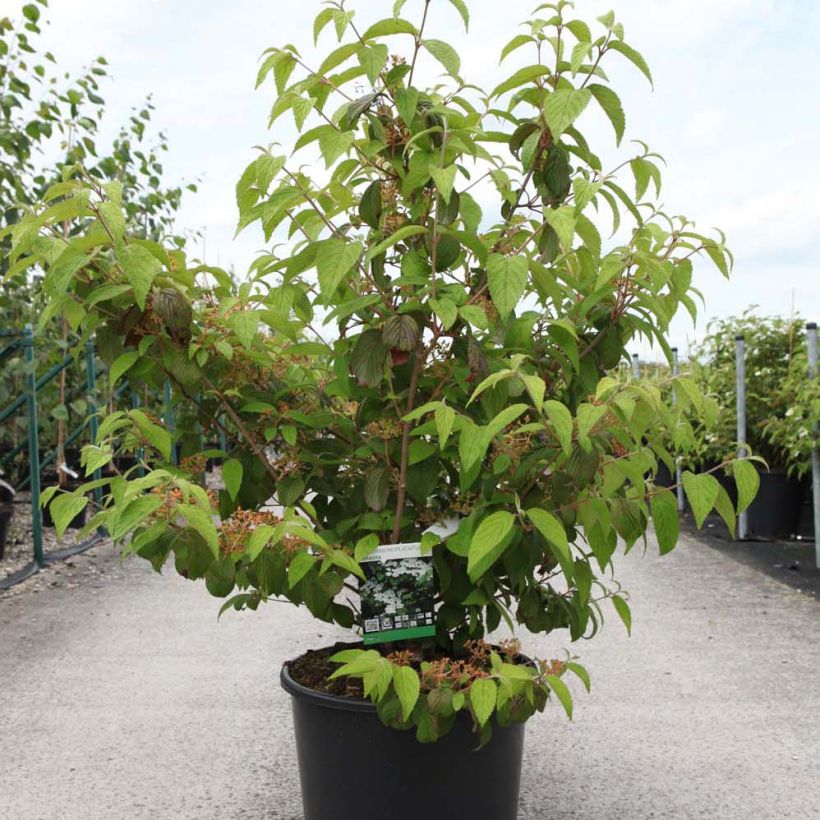

Plant habit
Flowering
Foliage
Botanical data
Viburnum
plicatum mariesii
Shasta
Caprifoliaceae (Adoxaceae)
Japanese Snowball, Japanese Snowball Bush
Cultivar or hybrid
Other Viburnum
Planting and care
Viburnum plicatum 'Shasta' is grown in full sun or partial shade. Place it from November to May, frost-free, in any type of soil without too much limestone and not too dry, preferably moist and humus-rich. This bush is easy to grow and requires little maintenance. The bush is often attacked by aphids without much danger. After flowering, you can prune the bush. Prune sparingly to maintain the naturally tabular habit. Remove branches that compromise the symmetry of the plant.
Planting period
Intended location
Care
-
, onOrder confirmed
Reply from on Promesse de fleurs
Striking foliage shrubs
Haven't found what you were looking for?
Hardiness is the lowest winter temperature a plant can endure without suffering serious damage or even dying. However, hardiness is affected by location (a sheltered area, such as a patio), protection (winter cover) and soil type (hardiness is improved by well-drained soil).

Photo Sharing Terms & Conditions
In order to encourage gardeners to interact and share their experiences, Promesse de fleurs offers various media enabling content to be uploaded onto its Site - in particular via the ‘Photo sharing’ module.
The User agrees to refrain from:
- Posting any content that is illegal, prejudicial, insulting, racist, inciteful to hatred, revisionist, contrary to public decency, that infringes on privacy or on the privacy rights of third parties, in particular the publicity rights of persons and goods, intellectual property rights, or the right to privacy.
- Submitting content on behalf of a third party;
- Impersonate the identity of a third party and/or publish any personal information about a third party;
In general, the User undertakes to refrain from any unethical behaviour.
All Content (in particular text, comments, files, images, photos, videos, creative works, etc.), which may be subject to property or intellectual property rights, image or other private rights, shall remain the property of the User, subject to the limited rights granted by the terms of the licence granted by Promesse de fleurs as stated below. Users are at liberty to publish or not to publish such Content on the Site, notably via the ‘Photo Sharing’ facility, and accept that this Content shall be made public and freely accessible, notably on the Internet.
Users further acknowledge, undertake to have ,and guarantee that they hold all necessary rights and permissions to publish such material on the Site, in particular with regard to the legislation in force pertaining to any privacy, property, intellectual property, image, or contractual rights, or rights of any other nature. By publishing such Content on the Site, Users acknowledge accepting full liability as publishers of the Content within the meaning of the law, and grant Promesse de fleurs, free of charge, an inclusive, worldwide licence for the said Content for the entire duration of its publication, including all reproduction, representation, up/downloading, displaying, performing, transmission, and storage rights.
Users also grant permission for their name to be linked to the Content and accept that this link may not always be made available.
By engaging in posting material, Users consent to their Content becoming automatically accessible on the Internet, in particular on other sites and/or blogs and/or web pages of the Promesse de fleurs site, including in particular social pages and the Promesse de fleurs catalogue.
Users may secure the removal of entrusted content free of charge by issuing a simple request via our contact form.
The flowering period indicated on our website applies to countries and regions located in USDA zone 8 (France, the United Kingdom, Ireland, the Netherlands, etc.)
It will vary according to where you live:
- In zones 9 to 10 (Italy, Spain, Greece, etc.), flowering will occur about 2 to 4 weeks earlier.
- In zones 6 to 7 (Germany, Poland, Slovenia, and lower mountainous regions), flowering will be delayed by 2 to 3 weeks.
- In zone 5 (Central Europe, Scandinavia), blooming will be delayed by 3 to 5 weeks.
In temperate climates, pruning of spring-flowering shrubs (forsythia, spireas, etc.) should be done just after flowering.
Pruning of summer-flowering shrubs (Indian Lilac, Perovskia, etc.) can be done in winter or spring.
In cold regions as well as with frost-sensitive plants, avoid pruning too early when severe frosts may still occur.
The planting period indicated on our website applies to countries and regions located in USDA zone 8 (France, United Kingdom, Ireland, Netherlands).
It will vary according to where you live:
- In Mediterranean zones (Marseille, Madrid, Milan, etc.), autumn and winter are the best planting periods.
- In continental zones (Strasbourg, Munich, Vienna, etc.), delay planting by 2 to 3 weeks in spring and bring it forward by 2 to 4 weeks in autumn.
- In mountainous regions (the Alps, Pyrenees, Carpathians, etc.), it is best to plant in late spring (May-June) or late summer (August-September).
The harvesting period indicated on our website applies to countries and regions in USDA zone 8 (France, England, Ireland, the Netherlands).
In colder areas (Scandinavia, Poland, Austria...) fruit and vegetable harvests are likely to be delayed by 3-4 weeks.
In warmer areas (Italy, Spain, Greece, etc.), harvesting will probably take place earlier, depending on weather conditions.
The sowing periods indicated on our website apply to countries and regions within USDA Zone 8 (France, UK, Ireland, Netherlands).
In colder areas (Scandinavia, Poland, Austria...), delay any outdoor sowing by 3-4 weeks, or sow under glass.
In warmer climes (Italy, Spain, Greece, etc.), bring outdoor sowing forward by a few weeks.

































